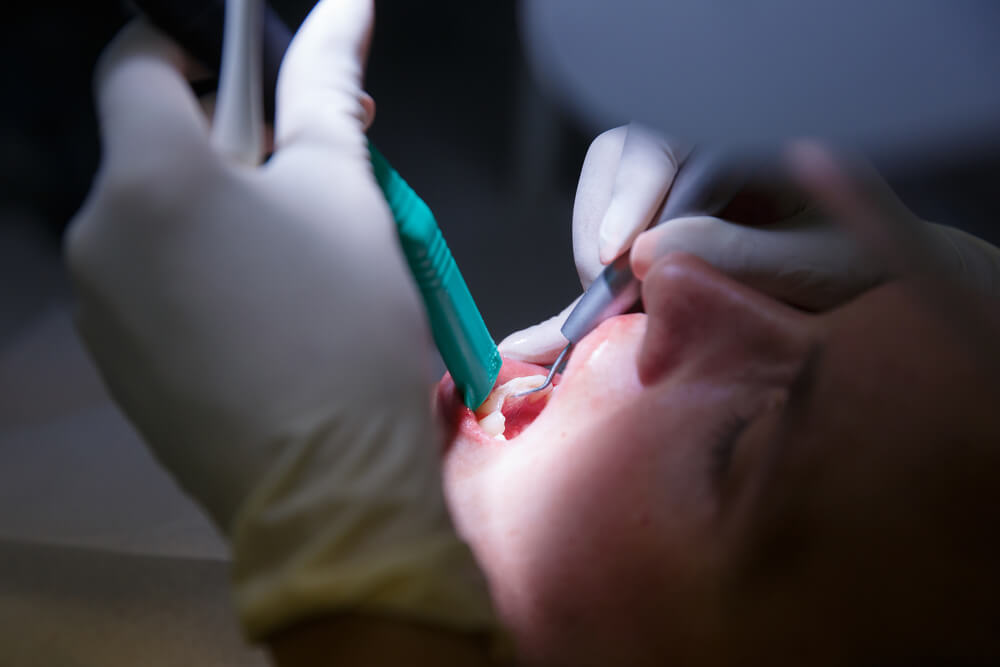Diabetics: Protect Your Mouth from Gum Disease, a Much Overlooked Diabetes Risk
Developing gum disease is one of the many diabetes risk factors that reflect high levels of sugar in the blood. Too much sugar, or glucose, in the blood can cause many problems in your mouth because of the presence of sugar in your saliva. When diabetes is not being controlled, the high levels of sugar in blood and saliva allow for an environment in which bad bacteria can grow. When harmful bacteria in your mouth combines with what you eat, it forms plaque, which overall is dangerous for the health of your mouth.
When speaking in reference of the mouth and its diabetes risk factors it can include any of the following:
- Teeth
- Gums
- Jaw
- Tissues including: tongue, top and bottom of your mouth and the inside of your cheeks
Why Should I Worry About Plaque?
Plaque is dangerous for the health of your mouth because over time it begins to become hard. Hard plaque turns into tartar and commonly forms around the lines of your gums making it difficult to get them clean while brushing. Gingivitis can form from this tartar around your gums causing swollen, red, and irritated gums. Gingivitis is a diabetes risk that is not commonly thought of but gingivitis when left untreated can become a more serious disease called periodontitis. Periodontitis causes gums, bones and tissue to be destroyed if it is not treated by a specialist.
Diabetes Risk Factors: How to Notice Signs of Gum Disease
If you notice bleeding while flossing or brushing your teeth as well as red, swollen and tender gums, you should set up an appointment with your dentist. As stated from the National Institute of Diabetes and Digestive and Kidney Diseases, other signs of gum disease in your mouth can be:
- A sore or ulcer that doesn’t heal
- Dark spots or holes in your teeth
- Pain in your mouth, face, jaw that doesn’t stop
- Loose teeth
- Pain when chewing
- Bad taste in your mouth
- A changed sense of taste
- Bad breath that doesn’t go away after brushing
The best way to combat gum disease is by visiting your dentist regularly, every 6 months, for checks up’s and cleanings.
Type 2 Diabetes Prevention of Gum Disease
The National Institute of Diabetes and Digestive and Kidney Diseases has recommended steps for keeping your mouth healthy when you have diabetes. They recommend the following steps in type 2 diabetes prevention of gum disease:
- Visit your dentist every 6 months
- Make sure your dentist knows that you have diabetes and share information with them about your blood tests
- Follow your dentist’s advice when it comes to treatment steps or following up with problems
- Make an appointment with your dentist if you notice any changes in your mouth health
- Make sure to keep your retainers, or dentures clean and take them out to sleep
- Use dental picks to remove plaque between teeth
- Floss at least once a day, make sure you are flossing correctly
- Speak with your dentist about using mouth wash to prevent plaque or gingivitis
- Brush your teeth at least twice a day, gently
- Use fluoride toothpaste to prevent tooth decay
- Drink water with fluoride to also prevent tooth decay
- Make sure you are healthy healthy meals that help keep your blood sugar levels low
Diabetes and its risk factors can be controlled as long as you are taking the necessary steps to stay healthy. Watching what you eat and keeping your blood sugar numbers within their limits can greatly help not only the glucose in your blood but also your mouth. When in doubt, speak to your dentist, or medical professional about any questions that you have about your dental health.



